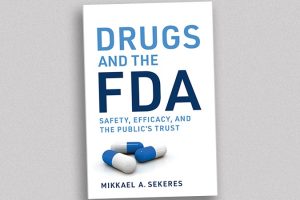History of the FDA: An Oncologist Gives an Inside Look

In Mikkael Sekeres’ latest book Drugs and the FDA: Safety, Efficacy, and the Public’s Trust (The MIT Press, 2022) he provides an inside look at how the FDA regulates drug approvals and the complexity of the process.
Sekeres tells this story by recalling his time spent on the Oncologic Drugs Advisory Committee (ODAC) during the controversial 2011 hearings that looked at whether the breast cancer drug bevacizumab (Avastin), which was granted accelerated approval at the time, should be pulled from the market. Sekeres is currently chief of the Division of Hematology at the University of Miami’s Sylvester Comprehensive Cancer Center.
This interview has been edited for length and clarity.
Medscape: Which specific events with the FDA led you to writing this book?

Dr Mikkael Sekeres
Sekeres: With this book Drugs and the FDA, I really started thinking about this the moment I was leaving the Avastin trial. It was a remarkable series of events that led to these proceedings. You had a drug that was created based on this revolutionary concept of how tumors survive and therefore what could be their undoing. The idea was that they’re dependent on their own blood supply, so if we can cut off the blood supply, we can kill tumors.
It was for a patient population that desperately needed a cancer drug: women with metastatic breast cancer. It was approved under the accelerated approval mechanism of the FDA, which was born out of HIV and AIDS activism in the 1980s and ’90s again from a desperate patient population.
The proceedings themselves were remarkable in that it was like a courtroom hearing — the FDA’s attorneys pitted against the attorneys from Genentech Roche, making the case in front of us. As a member of ODAC for that set of hearings, we were the jury. We decide whether to remove a drug from the market. (The FDA did rescind its approval of the drug in November 2011).
At the time, I reflected on whether what I had just witnessed was the ultimate demonstration of how well the FDA works or how well it doesn’t work.
The FDA is widely viewed as the safest regulatory agency in the world, but the drug was approved and then pulled from the market, so how does that affect the trust the public holds in the agency?
Now that was back in 2011. Since then, what we’ve seen is a juggernaut of accelerated approvals by the FDA, particularly for cancer indications. And as this has been going on, I’ve been in the role of a doctor trying to explain to my patients whether we should use a drug that has received accelerated approval.
When you have this many drugs approved under accelerated approval, some of those drugs are going to be pulled from the market. We’re seeing that happen. Some drugs in the past year or two that originally received accelerated approval are now being pulled from the market.
So, for me, I write because I’ve always written and because it’s a way to process what we see in medicine. Also, it seems like the right time to write a book about the FDA because, as far as I can tell, the history of the FDA hasn’t been consolidated into one volume yet. I think it’s important to understand how the FDA approves and withdraws drugs from the market nowadays.
Medscape: How did your time as an ODAC member shape your view of the FDA?
Sekeres: It’s an incredible honor. I look at it as serving my country. I really do. I think any of us who are on ODAC does. It’s incredibly stressful because you are thinking about the people who have a terrible diagnosis and desperately need a new drug, and about protecting the health of the public. I have a tremendous amount of respect for both the FDA and its team and how they make decisions.
Medscape: What was your goal in writing this book?
Sekeres: I hope that this book makes the FDA more transparent and the workings of members of FDA committees like ODAC more transparent, so it raises awareness of how drugs are approved and how carefully everyone who’s involved in that process is when deliberating on drugs.
My biggest takeaway for anyone who reads this book is that the drug approval process is complicated. And it’s important to be cognizant of when a drug is approved under the accelerated approval mechanism as opposed to the regular approval pathway. Because I really think that when a drug is approved under accelerated approval, it should have a big fat asterisk after it that basically says: “We’re making this drug available. It’s a patient population that desperately needs something. There are early signals that this drug really is going to help, but more data are coming.”
For more news, follow Medscape on Facebook, Twitter, Instagram, YouTube, and LinkedIn
Source: Read Full Article